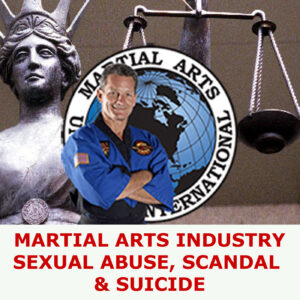 Affluence, effective leadership, eloquent speech, powerful words, charisma, influence, business success, charity, contributions to society and confessions of moral value does not ensure a safe and nurturing environment for our children or anyone else for that matter.
Affluence, effective leadership, eloquent speech, powerful words, charisma, influence, business success, charity, contributions to society and confessions of moral value does not ensure a safe and nurturing environment for our children or anyone else for that matter.
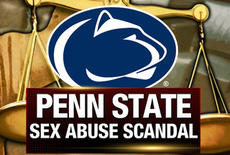 With the Sandusky trial under way and the ongoing sexual abuse revelations of the Roman Catholic Church, I was reminded just six days ago of how no organization is immune to the atrocities of deviant behavior (see Legendary Syracuse Karate instructor was facing sexual abuse allegations before suicide ).
With the Sandusky trial under way and the ongoing sexual abuse revelations of the Roman Catholic Church, I was reminded just six days ago of how no organization is immune to the atrocities of deviant behavior (see Legendary Syracuse Karate instructor was facing sexual abuse allegations before suicide ).
As a “professional” martial arts educator (“Master” level rank) and a self-proclaimed “education activist”, I am still processing this revelation. I am also asking myself the question, what am I doing to ensure that my home, my business and any organization / institute I choose to associate with is not an environment where deviant behavior can exist let alone, thrive in?
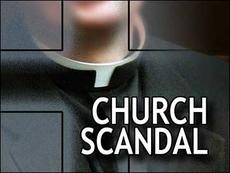 Another question I am asking myself is, what can I learn that might be used to help other organizations that engage with children and youth services?
Another question I am asking myself is, what can I learn that might be used to help other organizations that engage with children and youth services?
The following key principles are used in the Catholic Church and have been generalized to use with all any organizations that provide services and ready access to children.
Key Principles To Create A Safe Environment
Follow the civil law
All states have child abuse reporting laws that mandate child protection and law enforcement involvement with any reasonable suspicion of child sexual victimization. Everyone working with children must be aware of the laws in their jurisdiction about child abuse reporting and act accordingly. Here is a link for my state: NEW JERSEY
NEW JERSEY: How and When to Report Child Abuse/Neglect (En Español)In New Jersey, any person having reasonable cause to believe that a child has been subjected to abuse or acts of abuse should immediately report this information to the State Central Registry (SCR). If the child is in immediate danger, call 911 as well as 1-877 NJ ABUSE (1-877-652-2873). A concerned caller does not need proof to report an allegation of child abuse and can make the report anonymously.
Employment Screening
A second lesson learned is that all those employees (and volunteers) who work closely with children must participate in reasonable, appropriate, and state of the art employment screening procedures to maximize the chances that sex offenders or those who are at significant risk of violating and abusing children are not allowed access to vulnerable children. This screening includes criminal background checks (New Jersey) as well as an examination of other potential risk factors for child sexual abuse. This might include psychological or psychiatric evaluations to examine impulse control problems, a personal history of sexual exploitation, substance abuse problems, affective or personality disorders, and other possible risks. Clergy and potential clergy in the Catholic Church, for example, now routinely are evaluated by a psychologist and Church officials conduct criminal background checks and other screening procedures as well.
Zero-tolerance
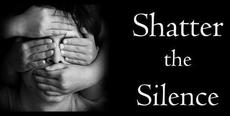 Any credible accusation of child sexual abuse perpetrated by anyone is taken seriously, reported to law enforcement, and the person is removed from position for the rest of their lives.
Any credible accusation of child sexual abuse perpetrated by anyone is taken seriously, reported to law enforcement, and the person is removed from position for the rest of their lives.
This is was one controversial outcome of the clergy abuse crisis in the Catholic Church is the “zero tolerance” policy. What makes this policy controversial is the fact that there are no exceptions to the rule even when the accusation do not lead to criminal or civil prosecution. Additionally, a sexual abuse accusation from decades ago results in being removed from ministry too with no statue of limitations considered. There is no possibility of reconciliation, treatment, or any other efforts that have the goal of a return to active ministry. Zero tolerance thus errors on the side of caution so that anyone with credible accusations of abuse is never allowed to act as a Catholic priest in public ever again. There is no parole and no way to get out of the penalty box.
Safe Environment Training
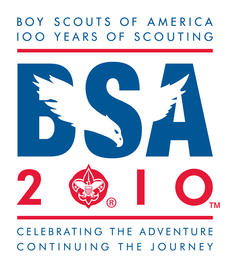
Safe environment training mandates that all employees, instructors/teachers, assistant instructors/teachers, volunteers, and clients/customers of organizations’ services that involve children (including both parents and children themselves) are adequately trained/informed in policies, procedures, and information about keeping children safe from sexual exploitation.
Commercially available training programs are used with various [organization] populations and all parties are trained on how to maximize child safety behaviors. This training must be appropriate to the age of the person receiving training of course.
Many organizations such as the Boy Scouts mandate child protection training for the adult leaders and volunteers who have access to children. Other organizations could do the same as well.
Yearly Audits
All Catholic Church groups such as dioceses are now audited once per year by an independent auditing agency to ensure that policies and procedures for child protection are being followed. Those who are not in compliance are notified and this information is made public. Any organizations that service children could do the same. It is important that an independent outside agency carefully audits policy and procedure compliance and that the results of the audit process are made public.
“Social Engineering”
Any and ALL organizations that service children and youth must create environments so that sexual abuse of children is extremely difficult if not impossible to do. For example, not allowing adults to be alone with children, making sure parents and other guardians are available for field trips, camping, and other trips away from home are important. Additionally, surveillance cameras in strategic locations, regular supervision, and other efforts all work together to create an environment where abuse is too difficult to occur.
Research
Research is thus critically needed to better understand the nature, scope, causes, and context of institutionally based child abuse. Prevention programs can only be developed and adequately target at-risk persons and situations if adequate research uncovers loopholes within these organizations. Remarkably, we really don’t know what percentage of the population sexually violates children or exactly how many cases of child sexual victimization have occurred in other organizations. Research initiatives are desperately needed in order to determine exactly who sexually violates children within institutions servicing youth as well as the risk factors that contribute to this victimization.
Conclusion
The crisis in the Catholic Church has lead to a decade of research, policies, and procedures to keep children safe within the Church. Much can be learned from this decade of crisis and other organizations can take a page from the Church’s playbook to help keep children safe within their organizations. The crisis in the Church created a tipping point to ensure that all of the best science and clinical practices comes into play to make sure that children are safe and that those who might harm children are not allowed access to potential victims. Penn State is learning these lessons now as are other institutions that service youth. Now, if we can get everyone, including the Martial Arts Industry to follow these state of the art policies and procedures then we will be moving in a direction that can ensure that no child will be abused in the future. That’s what we MUST strive for …to keep all kids safe now and forever.
Shakeshaft, C. (2004). Educator sexual misconduct: A synthesis of existing literature. Washington, DC: U. S. Department of Education.
John Jay College of Criminal Justice (2004). The nature and scope of the problem of sexual abuse of minors by Catholic priests and deacons in the United States. NY: Author.
John Jay College of Criminal Justice (2011). The causes and context of the problem of sexual abuse of minors by Catholic priests and deacons in the United States. NY: Author.
United States Conference of Catholic Bishops (2012). 2011 annual report on the implementation of the charter for the protection of children and young people. Washington, DC: Author.
United States Conference of Catholic Bishops (2002). Charter for the Protection of Children and Young People. Washington, DC: Author.
United States Conference of Catholic Bishops (2002). Essential norms for diocesan/eparchial policies dealing with allegations of sexual abuse of minors by priests or deacons. Washington, DC: Author.

